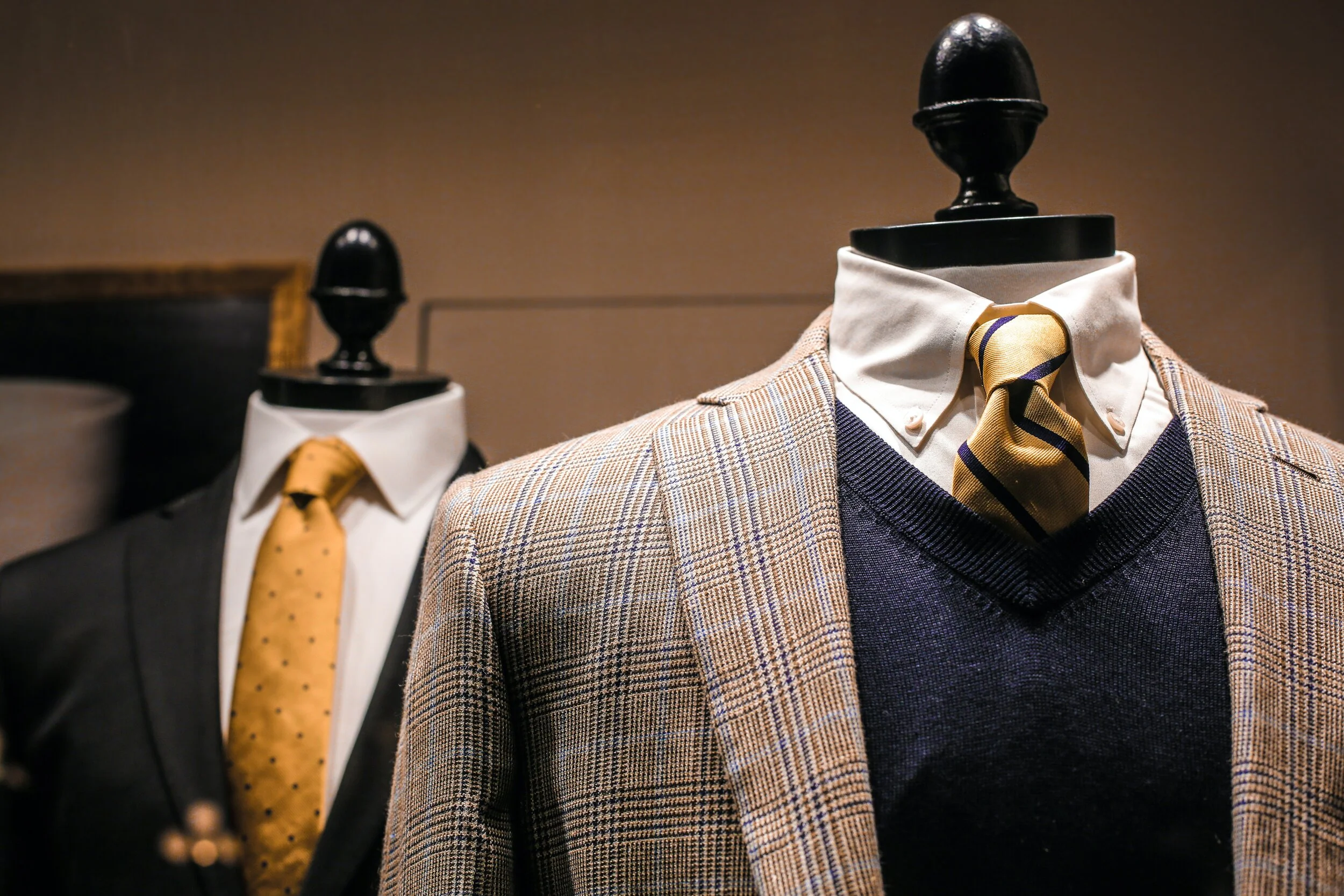Know Your Suit Fabric: A Guide to Choosing the Right Custom Suit
Finding the perfect custom suit can involve a lot of decision-making, but not in a ‘flipping through nearly identical paint samples for your kitchen’ kind of way. These decisions help to bring out your personality while sticking to established style standards that define your look.
One of the first choices that you will make is finding the right fabric for your suit. This happens before you choose the pattern or style of your suit. Different fabrics directly impact durability, comfort, and the “personality” that your suit gives off - along with ensuring that you can depend on your suit when you need it.
In this post, we’ll outline some of the standard fabric choices you’ll come across in your process. We’ll also help you understand why you should pick one or the other and how the choice will impact your wear. So, let’s dive into the world of suit fabrics.
Wool Suit Fabrics
Wool is the most widespread fabric in the suiting world. It is timeless, natural, versatile, and also incredibly diverse.
Wool comes in specific types such as tweed, merino, and flannel - although worsted wool is the most common. Worsted wool is combed to remove excess fibers before it is spun, leaving a sleek finish that is suitable for business, weddings, and other formal occasions.
Tweed and flannel are more suitable for chiller temperatures and have that signature textured look that screams English tailoring. These can be just as versatile, especially in the damp, mild climate of the Pacific Northwest.
As far as temperature goes, wool performs best when it is insulating you against a chilly breeze. If you are looking for a four-season suit to get you through everything the year has to throw at you, search for lighter-weight wool fabrics like merino or fresco. With variety like this, wool makes a case for being the best fabric for suits - but don’t count out the remaining styles on this list.
Linen Suit Fabrics
A linen suit is built with one thing in mind: climate. This plant-based fabric is exceptionally breathable, with a loose weave texture that is supple and flexible. If you have ever vacationed in warmer parts of Europe, you probably recognize linen as the uniform of a classy gentleman who lives where heat is a concern. Although the fabric is less common in North America, it makes it that much more distinctive when worn correctly.
There’s one thing to get used to with linen, and that is its distinctive “wrinkled look.” This fabric has a tendency to crease easily, which you will notice across the back or arms of your suit jacket. Don’t sweat it. Linen suits are naturally meant to look more disheveled, so they are much better for less formal occasions like a dinner by the marina or a beach wedding.
Cashmere Suit Fabrics
Whether or not you own any clothing items that are made of cashmere, you probably know that this fabric exudes luxury. Cashmere is a type of wool coming from a specific goat species that is virtually unmatched when it comes to softness and insulating capabilities.
You may see cashmere/wool blends when looking for your ideal suit. This is a strong choice, since a suit with too much cashmere may be too nice for everyday use. Luxurious fabrics like these are prone to snags or abrasions, which cannot be fixed.
A suit fabric with 5-10% cashmere content is a great place to start when you are looking to try it out for the first time. Save this suit for special gatherings in the fall and winter, and lean on your “workhorse” wool pieces for the day-to-day grind.
Cotton Suit Fabrics
As we start to delve into less common suiting fabrics, cotton might stand out as a fabric that doesn’t belong. Although it’s easy to write off cotton as inexpensive or of lesser quality. But the truth is, there are certain times when a cotton suit can outperform its rivals, even on a limited budget.
Cotton suits perform best in the summertime, and it is a suitable substitute for linen. Just try to track down a lighter, open weave fabric so that you can get the most of its breezy capabilities.
The main drawback of this suiting fabric is that it creases easily. You should leave time for a quick iron before leaving the house in your cotton suit. Your trousers won’t drape the same way as wool, so you will need as sharp of a crease as you can manage. Not sure how to iron suit pants? This video will get you up to speed on this essential skill.
A World of Fabrics, But Only One That’s Perfect For You
Suiting fabrics are full of all the nuances that come from the wide world of fabric production. Some of the fabrics that we stock for custom suits come from several hundred-year-old mills in Italy, England, and Australia, where production methods are steeped in tradition and the tiniest details are chosen with great deliberation.
There is so much that goes into deciding the right fabric - and we don’t expect you to know everything about it.
Once you have a general idea of what fabric will work for you, we can take care of the rest. So get in touch with us to have your fabric questions answered and start your next bespoke suit journey.

